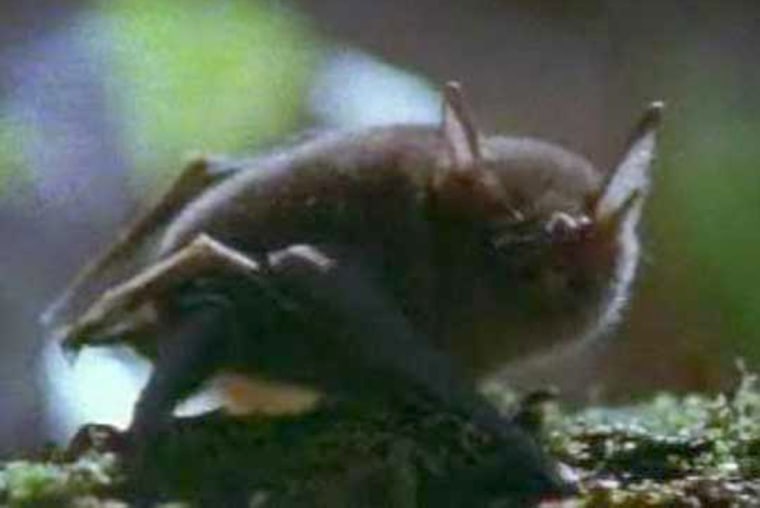There is a type of bat in New Zealand that can walk on all fours — setting it apart from most species that get flustered or stuck when they fall to the ground.
Now, scientists report evidence that a similar, ancestral bat scurried around Australia 20 million years ago. The work raises new questions about why some bats abandoned their dedication to the sky and returned to the land.
Before, it seemed obvious that the lesser short-tailed bat moved earthward when it arrived in New Zealand because the island offered a safe place for the bats, with no competitors or predators and lots of untapped sources of food on the ground.
Terrestrial competitors and predators, however, were abundant in Australia when the bats lived there. The new findings suggest the traditional theory may require a closer look.
"We were struck by how similar the bones were of the bats living in New Zealand today and the ones in the fossil record in Australia," said Suzanne Hand, a paleontologist at the University of New South Wales in Australia. "The theory that this lineage of bats only became terrestrial once they got to New Zealand obviously didn't gel anymore."
Over the course of evolution, bats have become extremely specialized for flight. Their legs, which are too skinny and weak to be useful, are rotated 180 degrees so their knees face backwards. Their forearms and fingers are stretched out so far that walking on them is also virtually impossible. They hang upside down so they can drop into flight. In their path toward specialization, these mammals have mostly lost their ground-based skills.
While many bats manage to flap and move around on the ground or jump into the air, only two out of some 1,110 species have what scientists consider to be a true walking gait: Vampire bats and New Zealand's lesser short-tailed bats, also called burrowing bats.
In the case of burrowing bats, a few unique adaptations allow them to walk, Hand said, including grooves in the soles of their feet and claws at the base of their toes that allow them to cling and grip. They bend their elbows sideways in order to push off with their wrists. They even have pockets in their skin that allow them to tuck their wings away while walking.
"These particular bats in New Zealand are really quite amazing," Hand said. "Just about every element in their skeleton has been involved in developing this ability to get back to the ground."
For a long time, scientists have assumed that burrowing bats hit the ground running after they arrived (probably by wind) in New Zealand, which was blissfully free of competition and predators before people arrived. It's the same reason kiwis, among other birds in New Zealand have lost the ability to fly altogether.
Burrowing bats can still fly, but they spend 40 percent of their foraging type on the ground, said Brown University biomechanist Daniel Riskin. And they'll eat just about anything, including spiders, flowers and fruit.
Scientists have known for a while that ancestors of the burrowing bat lived in Australia from at least 26 million years ago to about 12 millions years ago. With only skull and teeth remnants to go on, though, no one could tell for sure where or how the bats lived and moved.
More recently, archeological digs have turned up a more extensive skeletons, and Hand decided it was time for another look. She and colleagues focused on the humerus bone, which is part of the elbow joint and helps determine how the bats fly and walk.
Their analyses, published in the journal BMC Evolutionary Biology, revealed remarkable similarities between the ancient bat and the modern one, including the unique angle of the joint and grooves that give muscles leverage for pushing hard off the ground.
"For at least 100 years, it has always been assumed that before they got to New Zealand, they didn't have this capacity" to walk, Hand said. "The fossil evidence and morphological evidence suggest that these guys were just as comfortable on the ground as the ones in New Zealand."
Riskin is not yet ready to jump to the same conclusions. The shape of a bat's skeleton doesn't necessarily predict if or how the bat will walk, he said. It's possible that the Australian ancestors were only slightly terrestrial, which wouldn't be that unusual given the behavior of bats today.
Still, the findings are intriguing enough to warrant further investigation.
"It brings up this whole question of (how) these bats evolved," Riskin said. "We have to reevaluate the assumption that it has to do with New Zealand's habitat."
